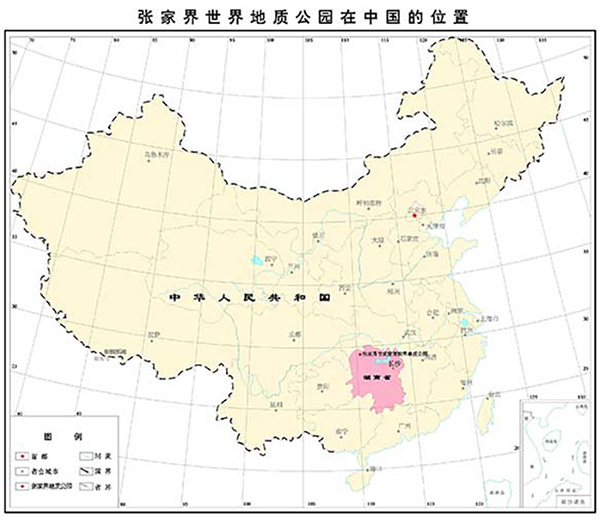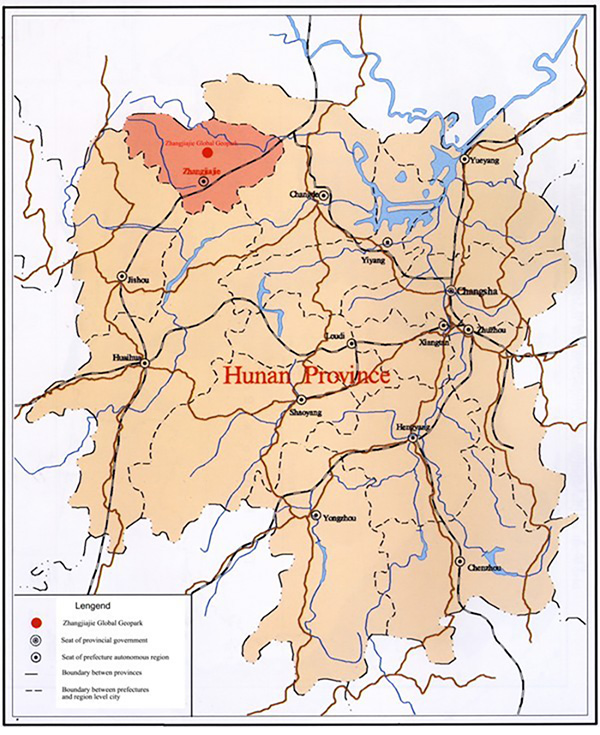Zhangjiajie World Geopark is located in Wulingyuan National Scenic Spot District, Zhangjiajie City, northwest of Hunan Province, 29 ° 13 ′ 18 ″ -29 ° 27 ′ 27 ″ north latitude, 110 ° 18 ′ 00 ″ east longitude, 110 ° 41 ′ 15 ″ east longitude. It is a transitional zone between the northeast of the the Yunnan-Guizhou Plateau in southwest China and the middle and low mountains in northwest Hunan, with an altitude of 300-1300m, a subtropical monsoon humid climate, and an annual precipitation of about 1400mm (Figures 1 and 2). The park covers an area of approximately 398km2, including a special level protected area of 21.02km2, a first level protected area of 77.63km2, a second level protected area of 16.29km2, a third level protected area of 139.54km2, and a development control area of 143.52km2. There are over 3000 stone pillars rising from the ground in the geological park, of which more than 1000 are over 200 meters high. It is a beautiful and spectacular landform that is extremely rare in the world and has important geological and geomorphological value. The geological park is rich in animal and plant resources, with over 850 woody plants and over 400 wild animals growing. The natural ecology is well preserved.

Figure 1 Location of Zhangjiajie World Geopark in China
There is a profound Xiangxi culture here. The Charming Xiangxi Grand Theater located in Wulingyuan National Scenic Spot District fully displays Xiangxi culture in an extraordinary artistic form and won the title of "National Cultural Industry Demonstration Base". Since being listed as a World Natural Heritage Site by UNESCO in 1992 and a World Geopark in 2004, the tourism industry led by ecotourism has developed rapidly.

Figure 2 Location of Zhangjiajie World Geopark in Hunan Province
At present, the park has formed a tourism series product that integrates tourism, ethnic customs, and scientific exploration. Zhangjiajie's peak forests, karst landforms, high mountains and flat lakes, direct flowing waterfalls, primitive forests, rural crops, Tujia mountain villages, ethnic customs, Tujia costumes, and Miao songs and dances fully showcase the park's harmonious tourism landscape, which has formed a huge tourism attraction. The rapid development of the tourism industry has greatly changed the traditional way of resource utilization in the region, reduced the burden of mountainous land, and played an important role in regional economic and industrial restructuring. It has become an important pillar of the local industry and an important economic source for local governments and community residents. At the same time, it has also become an important brand of Hunan's tourism industry.